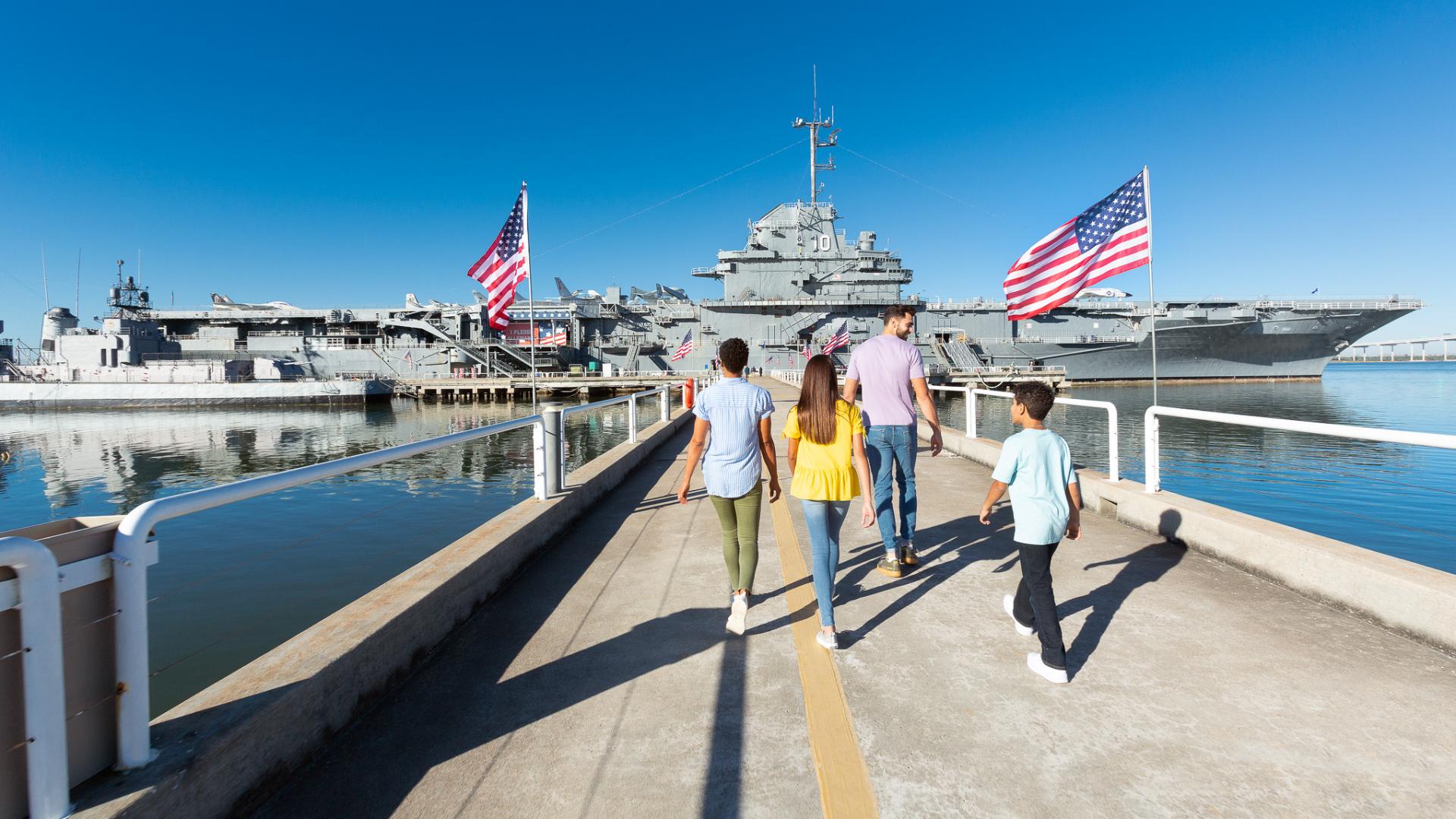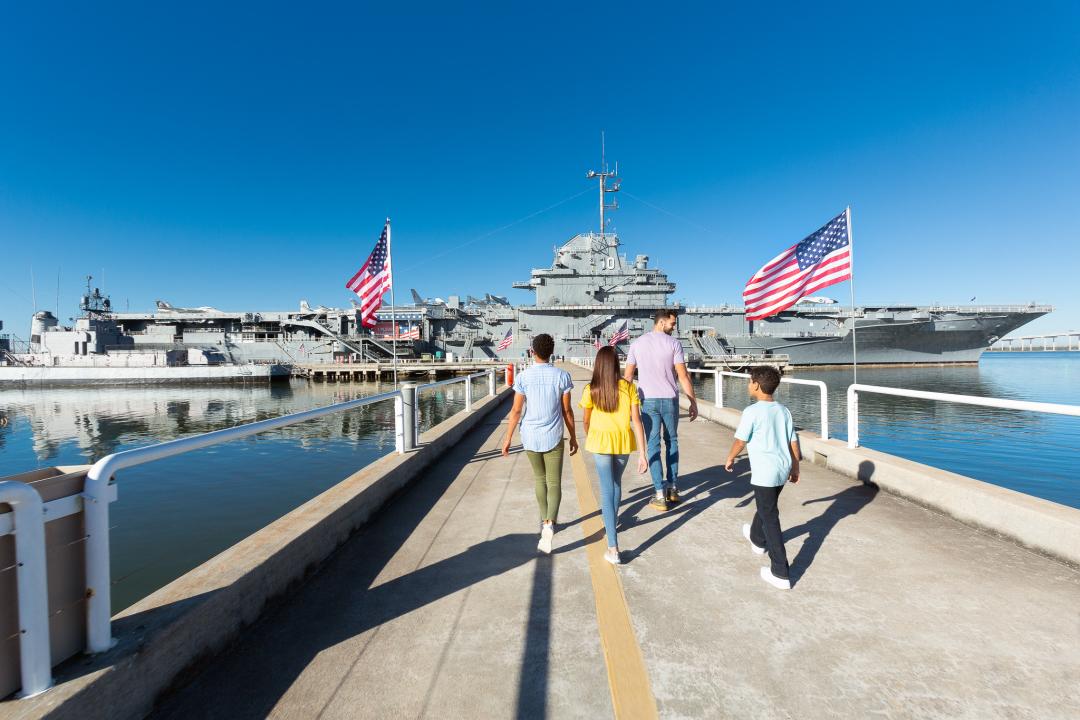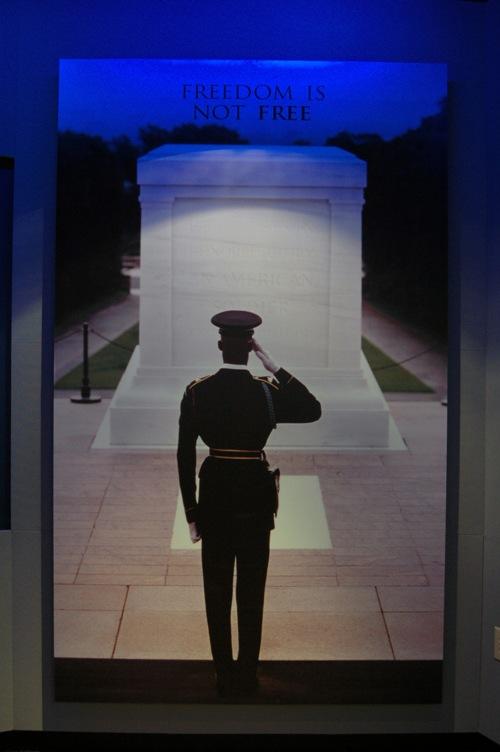
I touch the day, I taste the light, I remember - W. S. Merwin
When the Medal of Honor Museum opened to the public in May of 2007, a new interactive world of exhibits was placed onboard the USS Yorktown. This small world enables connections and memory to take over. The caption on the image above alerts the visitor as they enter the Medal of Honor Museum that "Freedom is not Free." The first stop in the Medal of Honor world forces the visitor to listen to a myriad of American generations discussing Freedom.You hear through American voices the fact that Freedom is what allows us to dream, to imagine, to become the people we are today and will be tomorrow. It gives us an ability to see our way through struggles, conflicts and crisis, much as the generation of Americans who survived the Great Depression and fought the Second World War. Those people were like us and their legacy gives us a basis to see our way through our own present economic condition and wars on terror.After the discussion on Freedom, the next stop is a look at the medals themselves in three versions: Army, Navy/Marine/Coast Guard, and Air Force with the history behind them.
Then comes a world of combat in which the visitor walks through an interactive tunnel complete with the sights and sounds of conflict from the Civil War through all our wars to present day. It is not a world we dream of, but we realize the horror of its reality. It helps the visitor to envision what our military men and women have gone through in their service to our nation and preservation of our Freedom. Watch a clip of it below...
A discussion on Freedom, the history of the medal and the tunnel of combat bring us face to face at the end of the tunnel walk with a small drummer boy, the youngest Medal of Honor recipient saw combat at the age of 11. He became a recipient at the age of 13. His drum was discovered in an attic during the 20th century and now rests in the display case seen below. The future of our country is our youth and even they can not be protected from the realities of life.
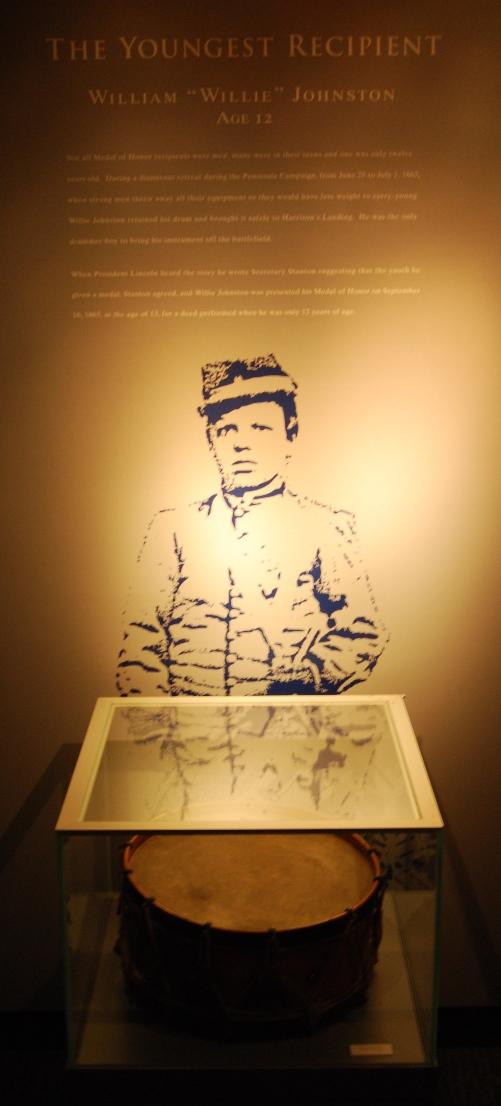
As you pass Willie, the Medal of Honor museum displays chronologically each war with images, artifacts and citations of Medal of Honor recipients. There are touch screens here and at other spots of the museum that allow you to search a database on Medal of Honor recipients. Below is a display case and the World War II era timeline with embedded images.
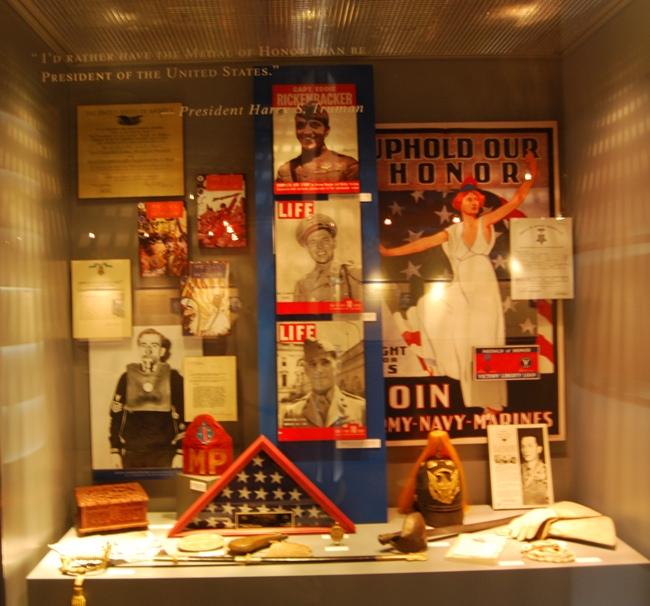
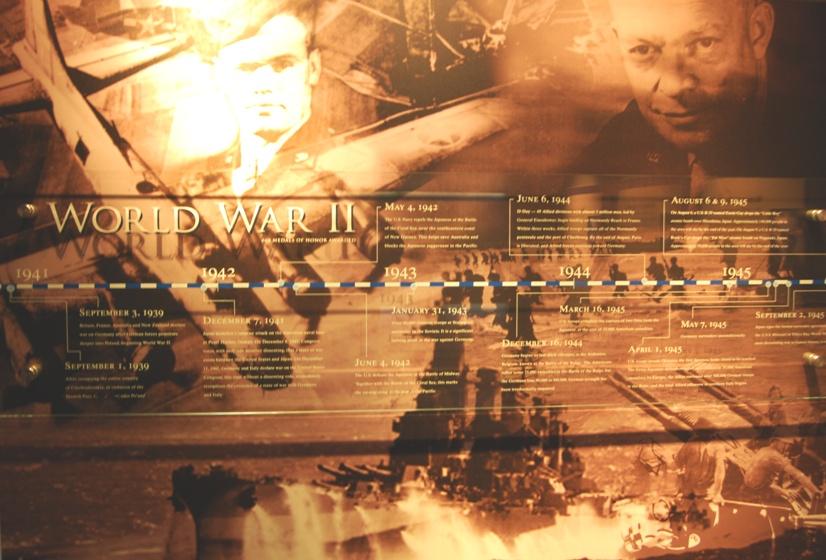
Experiencing this museum, visitors connect with our Medal of Honor recipients. Their stories and words tell you, that they were only doing what they had been trained to do and that there were other men and women like themselves. They tell you they wear the Medal for those Americans, but I think they wear it for all Americans. They remind us that in each of us is the ability to choose the right thing to do, to have honor and to protect those in our power to do so, thereby preserving Freedom for future generations. Here in the Medal of Honor Museum is our connection to greatness, not that we are great as individuals, but that we belong to the great ideal Freedom that has shaped and moved our nation from 1776 to 2011. It is a Freedom that has impacted other nations and individuals and continues to do so today. When we remember the sacrifices and experiences of those before us, we connect with their greatness and realize finally what we saw at our first stop, that "Freedom is not Free."
As we leave the recipients of past conflicts behind we encounter recipients of our current day conflicts, here is the display of our latest Medal of Honor recipient below.
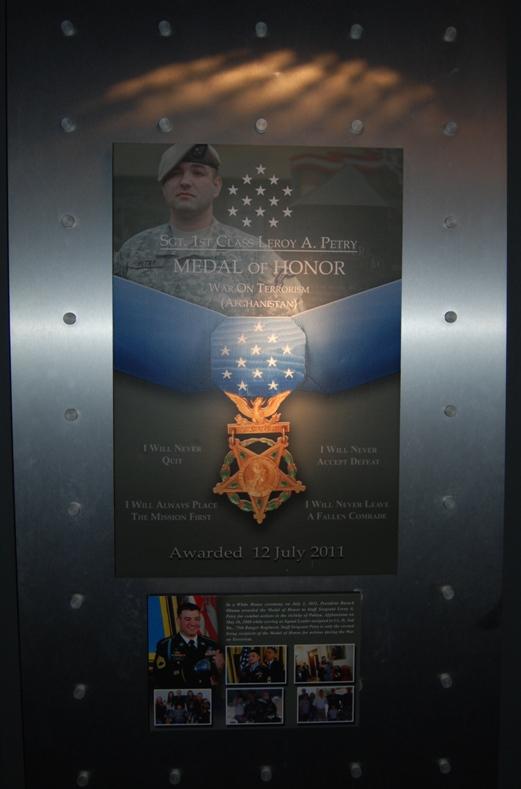
Preparing to exit the museum, more artifacts are displayed and a final profile of recipients past, like the one of Teddy Roosevelt below. All had only one life, but their life and sacrifice as free Americans have impacted our nation and the world in amazing ways. If you haven't visited the Medal of Honor Museum, put it on your bucket list and bring those you love with you.

